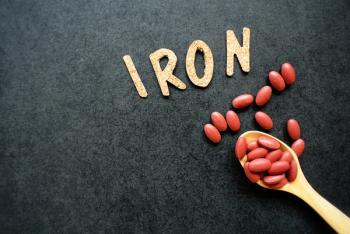
- Vol 64 No 9
- Volume 64
- Issue 9
Vaginal gel shows promise for recurrent BV
Results of a Phase III study suggest that a microbicidal vaginal gel may hold promise for prevention of recurrent bacterial vaginosis (BV).
Results of a Phase III study suggest that a microbicidal vaginal gel may hold promise for prevention of recurrent bacterial vaginosis (BV). The findings were presented at the
Led by researchers from the University of Alabama at Birmingham, the study was a randomized, double-blind, placebo-controlled trial designed to evaluate the safety and efficacy of astodrimer gel. The gel is a microbicide containing astodrimer sodium that is applied topically to the vagina, which has also been studied for prevention of HIV.
For this study, 864 women aged 18 to 45 were enrolled at 67 centers in the United States, Canada, Mexico, and Puerto Rico. All had a history of recurrent BV over the past year and a current diagnosis of BV, based on 3 of 4 Amsel criteria and a Nugent score (NS) of 4. They received 500 mg of metronidazole orally twice daily for 7 days and then were randomized to either 5 g of astodrimer 1% gel or placebo, given vaginally every other day. The women were evaluated for BV every 4 weeks and after 16 weeks, those who had no recurrence of BV were followed for up to 12 weeks after termination of therapy.
Recurrence of BV-defined as 3 Amstel criteria at or by Week 16-was the primary endpoint. The investigators also assessed time to recurrence, recurrence of symptoms, individual Amstel criteria, and NS 7 to 10.
The astodrimer sodium gel was associated with a lower rate of recurrence than placebo-44.2% vs. 54.3% (P = 0.15) and in the women treated with it, time to recurrence was significantly longer (P = .007). It was also associated with significantly less frequent recurrence of vaginal odor and/or discharge at or by Week 16 (27.9% vs. 40.6%; P = .002) and with the exception of pH, the rate of recurrence of Amsel criteria was lower in the women who used the gel. Using a composite of NS 7-10 and Amsel criteria to define BV recurrence, the authors also found that the rate was significantly lower in the treatment group.
Adverse events were similar in the women using the gel and those using placebo (12.2% vs. 11%). Candidiasis occurred in 14.6% of the group given gel vs. 8.9% of those given placebo during treatment, falling to 4.1% and 5.8%, respectively, during the follow-up period.
“Astodrimer gel has potential as a safe and effective, novel, non-antibiotic therapy for reducing recurrent BV,” said the authors while noting the low rates of candidiasis, which they called a “very common” side effect of antibiotics.
Articles in this issue
over 6 years ago
Readers React: SCD and the work of Dr. Doris Wethersover 6 years ago
Alternatives to traditional surgery for fibroidsover 6 years ago
Has gestational hypertension been banished?over 6 years ago
Substance use in the breastfeeding womanover 6 years ago
When seven surgeries equal one lawsuitover 6 years ago
Urologic chronic pelvic pain syndrome and female sexual functionover 6 years ago
Age at menopause and type 2 diabetesNewsletter
Get the latest clinical updates, case studies, and expert commentary in obstetric and gynecologic care. Sign up now to stay informed.










